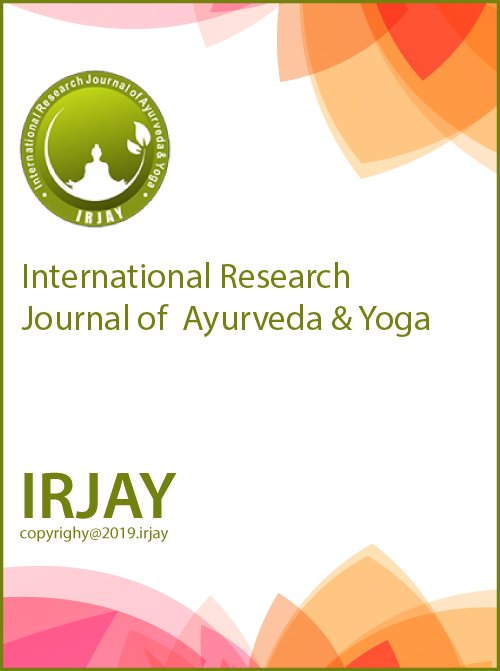THERAPEUTIC EFFECT OF ABHAYA LAVANA WITH SHARAPUNKHA KWATHA IN THE MANAGEMENT OF CHOLELITHIASIS – CASE STUDY
DOI:
https://doi.org/10.48165/IRJAY.2024.70405Keywords:
Abhaya Lavana, Cholelithiasis, GallstonesAbstract
Cholelithiasis is a worldwide medical condition, resulting from a combination of several factors like supersaturation of bile with cholesterol, accelerated nucleation of cholesterol monohydrate in bile, and bile stasis or delayed gallbladder emptying. Gallbladder stones present in one of three clinical stages: asymptomatic, symptomatic and with complications. The treatment options for asymptomatic range from no treatment to selective cholecystectomy. Laparoscopic cholecystectomy remains the default option for symptomatic cases. A definite non-invasive management is be a boon in asymptomatic and symptomatic uncomplicated gallstones. Abhaya Lavana is a strategic combination of Kshara & Lavana kalpana described in classical texts. Its indications point towards that this combination has a definite result in cholelithiasis and associated symptoms. Kwatha of Sharapunkha as anupana would definitely help to carry the drug to its site of action. To evaluate the effect of the treatment, A pre-post-test clinical study was conducted among the 13 participants. Clinical Intervention was done with 2g of Abhaya Lavana with 96ml of Sharapunkha Kwatha in the Middle of every Breakfast for 45 Days. Assessment of Subjective Parameters and Associated symptoms were done prior to the intervention and on 15th, 30th and 45th day. Pre and Post Assessment of Primary Objective - USG and Secondary objective - Lipid Profile were Conducted after Study. Safety of the Drug has been assessed by Pre and Post RFT and LFT.
This study reveals that combined effect of Abhaya Lavana and Sharapunkha Kwatha is effective in Cholelithiasis and reducing associated symptoms.
Downloads
References
Khuroo MS, Mahajan R, Zargar SA, Javid G, Sapru S. Prevalence of biliary tract disease in India: A sonographic study in adult population in Kashmir. Gut 1989;30:201-5.
Pak M, Lindseth G. Risk factors for cholelithiasis. Gastroenterol Nurs 2016;39:297-309.
Tazuma S, Unno M, Igarashi Y, Inui K, Uchiyama K, Kai M, et al. Evidence-based clinical practice guidelines for cholelithiasis 2016. J Gastroenterol 2017;52:276-300.
Gupta SK, Shukla VK. Silent gallstones: A therapeutic dilemma. Trop Gastroenterol 2004;25:65-8.
Ahmed I, Innes K, Brazzelli M, Gillies K, Newlands R, Avenell A, et al. Protocol for a randomized controlled trial comparing laparoscopic cholecystectomy with observation/conservative management for preventing recurrent symptoms and complications in adults with uncomplicated symptomatic gallstones (C-Gall trial). BMJ Open 2021;11:e039781.
Dasji SG. Pliha yakridodara. In: Bhaishajyaratnavali. 2006th ed. Varanasi: Chaukhambha Publications; 2003. p. 597.
Dalwadi P, Patel J, Patani P. Tephrosia purpurea Linn (Sharapunkha, Wild Indigo): A review on phytochemistry and pharmacological studies. Indian J Pharm Biol Res 2014;2:108-21.
Kshara L. In: The Ayurvedic Formulary of India. 2nd ed. New Delhi: The Controller of Publications; 2005. p. 164-5.
Sarngadharacharya P. Kwatha Kalpana- Madhyama khanda. In: Sargadhara Samhitha. 2005th ed. Varanasi: Chaukhambha Orientalia; 2006.
Gopalakrishnan S, Vadivel E, Dhanalakshmi K. Anti-inflammatory and analgesic activities of Tephrosia purpurea Linn. aerial and root extracts. J Pharm Res 2010;3:1103-6.
Effect of Sharapunkha (Tephrosia purpurea) on Gastrointestinal System. Available from: https://www.ijrap.net [Last accessed on 2020 Aug 18].

